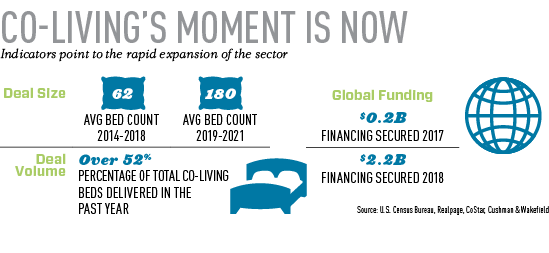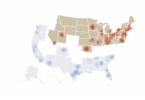Housing affordability has been a persistent issue in the U.S. for decades as the cost of homes has increased at four times the rate of household incomes, according to data gathered by Clever. This disparity has put affordable housing in high demand and created a market ripe for a new offering, especially in urban areas where real estate costs have ballooned.
Co-living is the residential manifestation of the sharing economy. In places like New York City; San Jose, California; and Chicago, new developments and conversion projects are creating a new residential option for the budget-conscious and the community-oriented buyer.
Most co-living spaces include a small private bedroom—usually furnished—and shared common spaces, such as a kitchen and living area. They tend to be located in urban hubs, where the tenant community is enhanced by the local culture and commerce. Flexibility is a key amenity. Some operators offer month-to-month rentals, while others allow residents to move freely about their properties after an initial commitment.
With an emphasis on experience, co-living developments address a shift in young Americans’ attitudes about homeownership. Bankrate polled millennial homeowners and found that more than 60% of them have regrets about their purchase, ranging from the costs of maintenance to the compromises they may have made on location to secure affordability. Well-appointed and well-positioned, co-living spaces give renters the ability to trade up in amenities, location and cost when they don’t mind foregoing square footage.
Operators leading the co-living market include Quarters, Ollie and Common. They’re partnering with developers, investors and brokers to get the word out about this new type of housing stock. Common co-founder Brad Hargreaves told Inman that he welcomes brokers to pitch him new projects. In Chicago, Caton Commercial Real Estate Group co-owner Steve Caton has been courting operators to expand on his work with Quarters. As an emerging market, co-living presents plenty of room for brokers to expand their portfolios.









